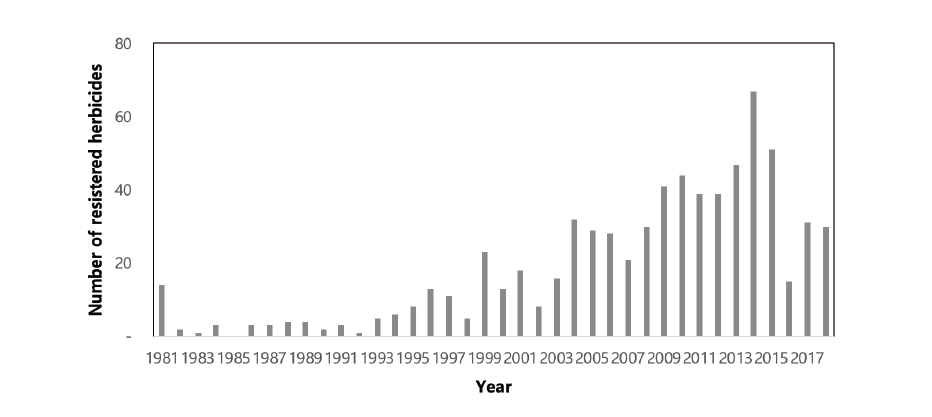Abstract
In Korea, the supply of herbicides began in 1955 and has increased since the 1970s. This study was conducted to find out the general status of herbicides registered in Korea since the 1980s (registration items, toxicity, formulation, and chemical component). Since 1982, the number of herbicide-registered items has declined since peaking in 2014. 85.3% of the registered herbicides were low toxicity, 86.1% of the herbicides registered since the 2010s were fish toxicity Ⅲ, and only 1.9% were fish toxicity Ⅰ. The formulation composition of registered herbicides increased from 9 in the 1990s to 17 in the 2010s. Among the 18 formulations of herbicides registered since the 1980s, the top priority was granules, emulsifible concentrate, soluble concentrate and suspension concentrate. The composition of registered herbicides varied according to the chronological age, but the sulfonylurea was the largest and the second was the chloroacetamide since the 1990s. The share of the top three lines of all herbicide lines declined by age, but the average share was high at 39.3%.
Figures & Tables

Fig. 1. Number of registered herbicides in Korea.


